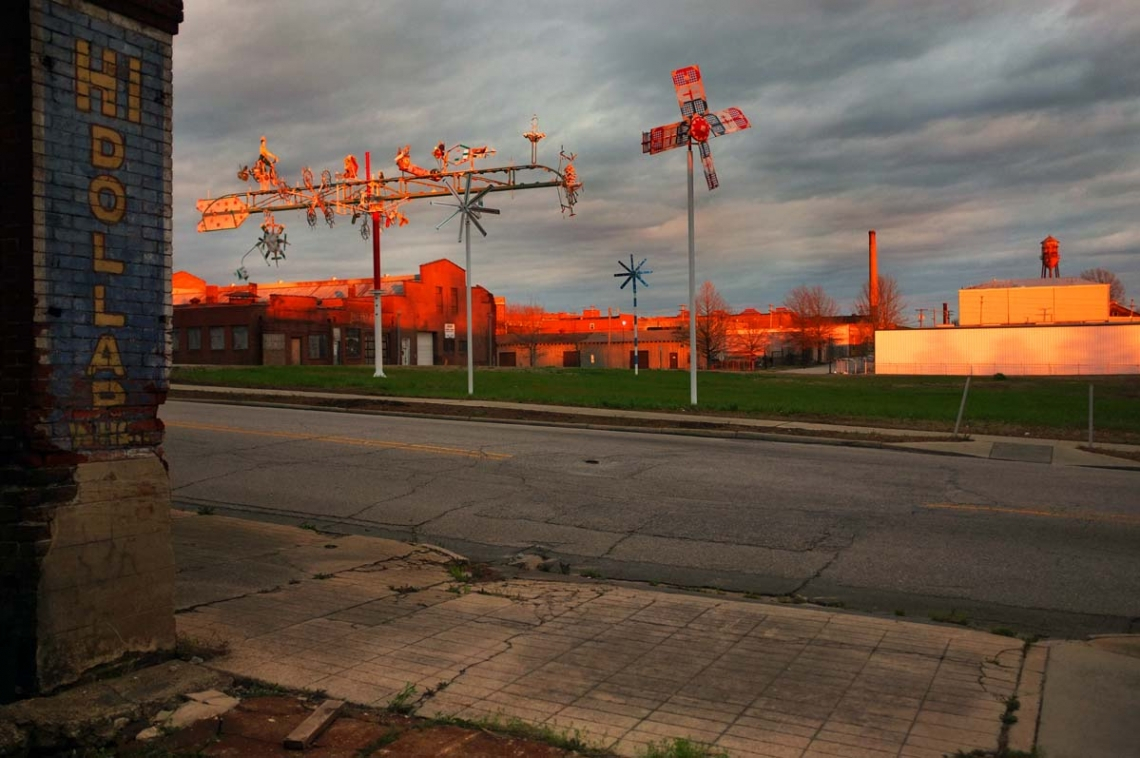
Have you ever considered partnership with traditional workforce development entities to further a culture of art in your community? Could your organization's artistic endeavors help address other systemic community challenges?
Through some deep organizational introspection and a little out of the box thinking, Vollis Simpson Whirligig Park was able to create a workforce training program to address community concerns and challenges, as well as some of our own critical needs.
Here is a little bit of background. Wilson, a small, rural, economically disadvantaged city of 50,000, decides to build a public sculpture park in their downtown to do 3 things: 1) preserve & display the life's work of local kinetic sculptor, Vollis Simpson 2) create a community gathering space to strengthen local social fabric, 3) economically revitalize Historic Downtown Wilson. In order to do so, we have acquired and are repairing and conserving 30 massive Simpson sculptures made of found materials, some weighing up to 5 tons and measuring 50 feet tall. These works have been in a field outside of town for 30 plus years, exposed to the elements and need LOTS of TLC to make them move gracefully in the wind again. This part of the project alone is a multi-million dollar undertaking.
To complicate matters, it's 2010 and we are deep in a recession. Local unemployment rates top 14%. Local sentiment is not totally on our side, with people asking, why spend money on art when people need jobs? It's a valid question. But, the thing is, we are a start-up project of a tiny nonprofit with little financial or human capital. And we have 30 large scale works of art, each with hundreds to thousands of moving parts and pieces that are rusting, peeling and seized up to repair and conserve. How are we going to afford to do this work? We cannot afford a team of 20 expensive conservators to work 40 hours a week, 52 weeks a year the next for 7 years. Light bulb moment! But we can get a team of prestigious expert conservators from around the country to volunteer their time developing conservation protocols and then train local folks in need of employment, at a reasonable wage, to do the work overseen by one or two professionals.
So that is the path we went down. Even better than helping address our organizational needs, we were able to help address larger community needs. In addition, we were able to help other nonprofits and institutions address their goals. We worked with 2 community development corporations that had workforce training programs but had a hard time placing workers and helping them get OTJ and employment. We also worked with the local community college who was trying to boost enrollment in some of their certification programs, such as welding. We needed workers that had basic soft skills training and some workforce training, but also knew how to use welders, lathes, milling machines and the like. Frankly, restoring Whirligigs is much less like conserving the Mona Lisa and much more like working in a body shop. Not only that, this path opened up workforce training grants that helped each entity cover their costs. We were able to put about 50 people to work on the Whirligigs.
We are now nearing the end of our art conservation process. On November 2, we will have the ribbon cutting for the public Vollis Simpson Whirligig Park! All 30 of the Whirligigs will have been brought back to their original grandeur and will be installed in the park. So what becomes of the workers? Well, some we were able to place in more permanent jobs. Some will stay on, as we have a list of Simpson Whirligigs owned by museums, institutions, and private collectors that need to be conserved. This is an income stream as well as great publicity for our organization. Not surprisingly, many in the workforce have proven to be quite entrepreneurial. We hope to turn the Repair & Conservation Headquarters into a makerspace of sorts, where these folks and others can make their own creations, inventions and start their own businesses or side hustles.
We can't say if the needs of your community’s artistic endeavors will have the same type of workforce needs as ours did, but it raises the question of how to incorporate a broader workforce into your larger goals. We also challenge you to think about what needs your local community has and how your work could possibly help address those challenges in unexpected ways. And are there strange bedfellows that you could partner with that you need and that also might need what you can bring to the table? In our case, the results have been positive with regard to skills training and job creation while also developing new advocates and improving public opinion of our project.
-
Kimberly Van Dyk, of the Vollis Simpson Whirligig Park Project, is a guest blogger for ArtPlace America.





